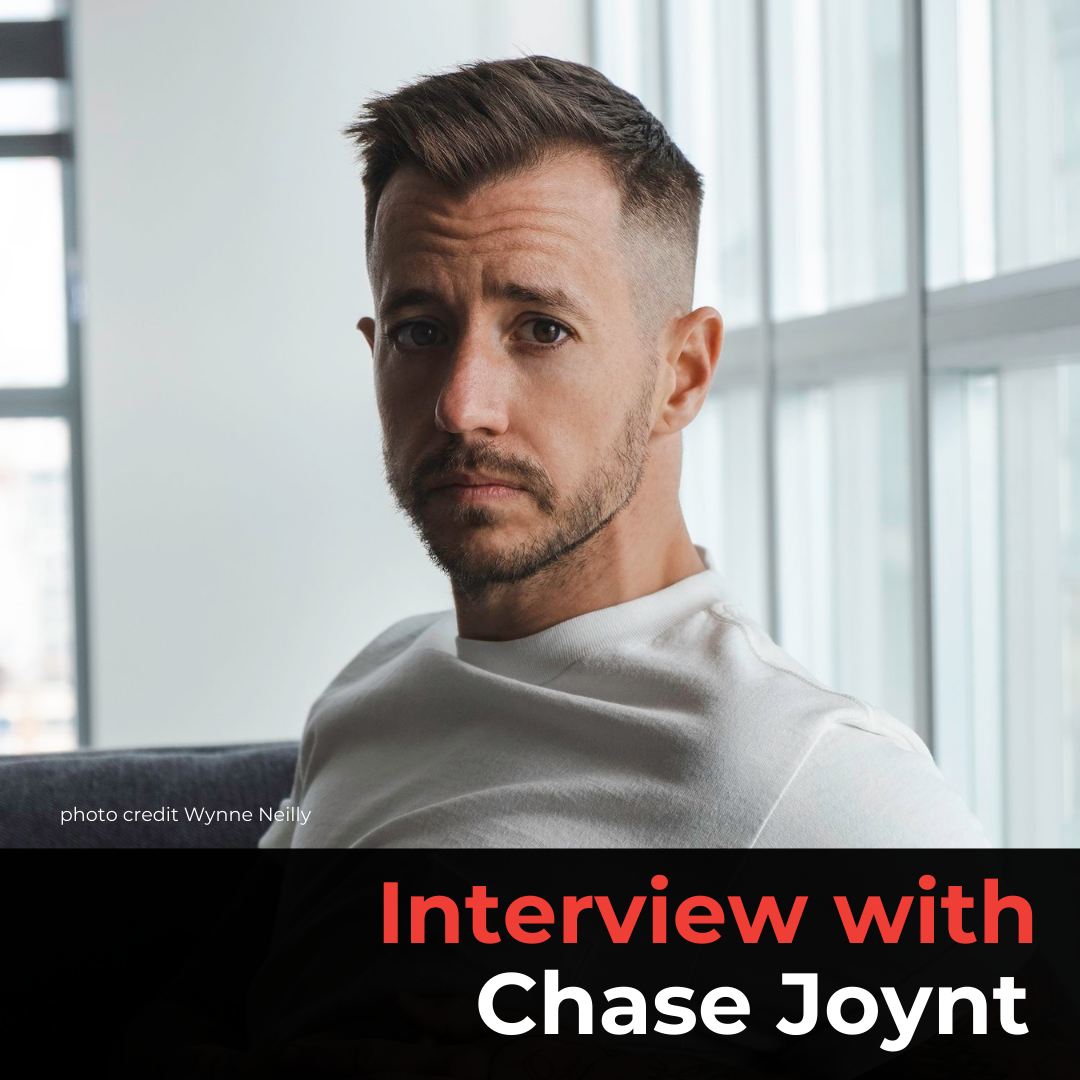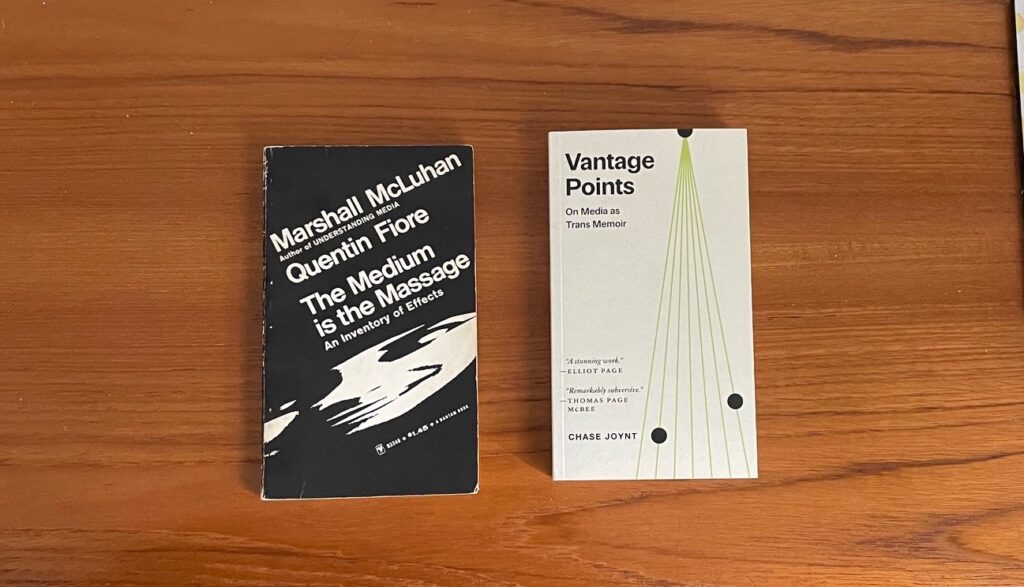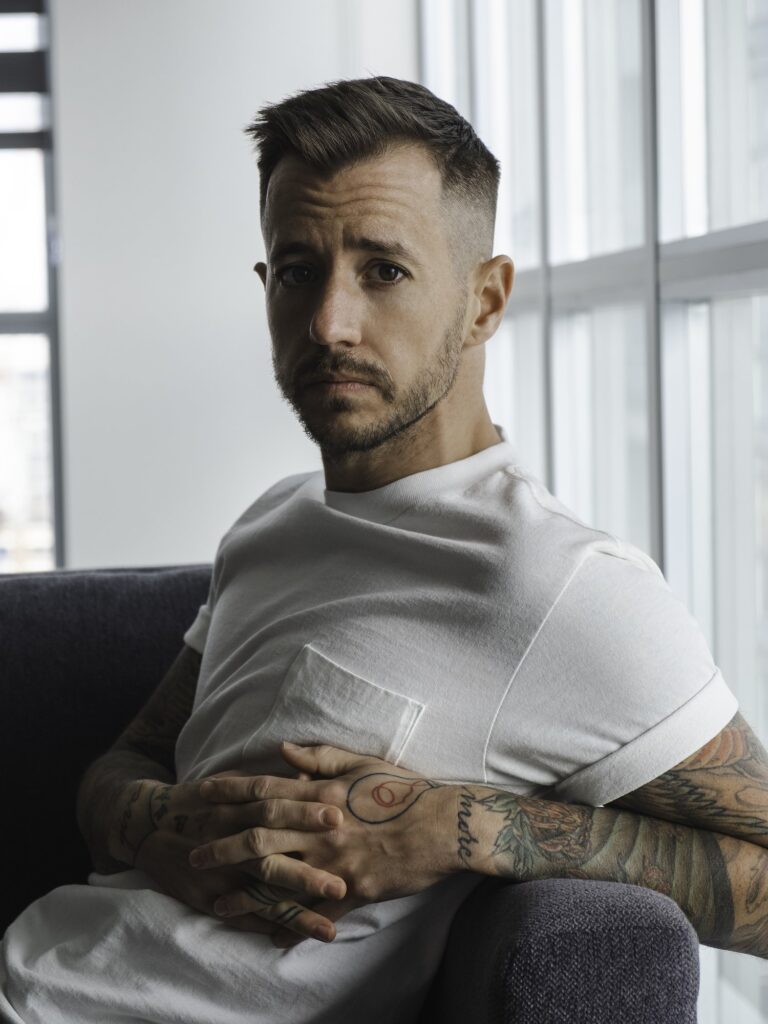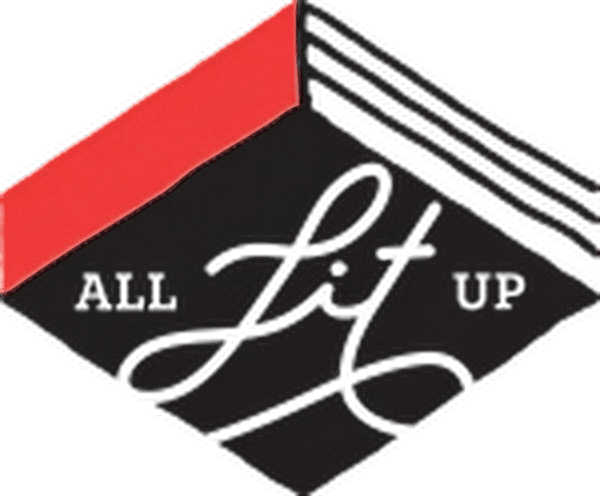Your cart is currently empty!
“We are too often disciplined into certain kinds of writing” – An Interview with Chase Joynt
In Chase Joynt’s new book Vantage Points (Arsenal Pulp Press), now a finalist for the 2024 Hilary Weston Writers’ Trust Prize for Nonfiction, he probes the notion of memoir itself through a trans lens, while examining a previously-unknown familial connection to famed Canadian media philosopher Marshall McLuhan. We talk with Chase (and Vantage Points designer Jazmin Welch) about the book below.

All Lit Up: You were already immersed in the fields of film, film criticism, and media theory, but had the idea of Vantage Points already taken hold when you discovered your familial connection to Marshall McLuhan? Or, was it that the discovery spurred the writing of this book?
Chase Joynt: In some crucial ways, one might consider any investment in media practice, criticism or theory to be an investment in vantage points! But I think that is an easy way out of your question. I’ve long considered how artists represent or reckon with difficult pasts and unspeakable acts, and as a result the subject matter of Vantage Points has lingered in the background of my career for more than a decade. I’ve often felt trapped by the project of trans life writing. What I mean by that is not to say that trans people should not engage in the project of writing about their lives for a reading public, but rather, that we are too often disciplined into certain kinds of writing which are predicated on disclosure and exposition to prove the legitimacy of our embodied existence. Encountering McLuhan in my family archive unlocked a kind of permission I didn’t realize I needed to sidestep those genre-based traps and hesitations. McLuhan’s thinking and formal innovations offered springboards from which I could build a different kind of story and family history. That said, it was actually encountering feminist uptakes and critiques of McLuhan that truly emboldened my methods!
“What if we had to live in the mediated in-betweenness of
many interpretations and how might that become a new
foundation for shared understanding?”
–Chase Joynt
All Lit Up: In the introduction you mention that Vantage Points achieves memoir through “new association and juxtaposition”, and in reading the book it’s clear that it is like a conversation, calling in the contributions of many around a table (or, to borrow from Roland Barthes as you do later in the book, a “discursive site”). How do you go about assembling the text of a book like this? What did the research and writing process look like?
Chase Joynt: Thanks for understanding the book in this way. I was recently reminded of the phrase “you are what you eat” (but, is that even true?) and I think there is something to be said for “you are what you read.” I started working on this project 5+ years ago, and throughout that time, right up until the final submission, I was reading and culling and thinking toward possible connections to build a tapestry of ideas and experience, which taken together can refocus our attention on a specific idea, media, or theme in each chapter. Texts and sources which felt like outliers, or too singularly focussed, were removed in revisions for precisely this reason, because one of the foundational commitments of the book is to prove interconnectedness. In this way, I hope the book might be read as a series of conversations – between texts, authors, sources, media, memory – far beyond me and my history, or me and the reader.
All Lit Up: At one point in the book you mention the only photos on display at the UCLA Gender Clinic’s archival collection are of trans people who were denied care; this is emblematic of several examples where experiences have been distorted or erased by “the record” (and frequently – these experiences fall along racial, gendered, and/or queer lines). How does the idea of “excavation” contribute to this book: of correcting and expanding the record?
Chase Joynt: Part of my commitment to this form of storytelling is to walk around an object/ technology/ memory/ person from as many different perspectives (hard to avoid using ‘vantage points’ here!) as possible in service of shifting perspective. I see this as a kaleidoscopic and excavatory approach, as it does not seek to settle the reader into one place. One of the excitements and problems of archives is they lead us to believe we can understand the truth about something or someone in the past, and this is even more pressurized when the archival source so closely touches our own personal, community or family history. What if we had to live in the mediated in-betweenness of many interpretations and how might that become a new foundation for shared understanding?
“No element in this book has been placed without meaning.”
–Jazmin Welch, Vantage Points designer
All Lit Up: An idea brought up in the introduction and throughout the text is that of “the production of masculinity,” particularly as it pertains to trans men. You discuss your own fears of transitioning in gaining closer proximity to the brutality and violence that you’d experienced at the hands of a man, and note the shared belief of Thomas Page McBee that trans men “are constituted by the men whom we fear.” But what’s also clear in this book is the community and safety you’ve built around you, and the interconnectedness that runs counter to toxic, masculine individuality. This is a (very) long way of asking: is the fear still there, these years on? How do (or did) you combat that particular fear?
Chase Joynt: Thanks for this thoughtful question. Yes, there is still fear! I can’t imagine how, in this socio-political climate, there wouldn’t be escalating anxiety about the overlapping crises of patriarchy and white supremacy that structure much of our political present. That said, you are right that I have found great comfort through kinship alongside those who feel equally alarmed and motivated to ask difficult questions and engage complex processes of discovery, about self, community and history that might have the chance to impact future outcomes. Something that Thomas in particular helps me sort through – both in friendship and through his writing – is the contours of shame which so often produce the violent masculinities which we fear. How can we meaningfully address shame within ourselves, and a culture which weaponizes that shame in order to better attend to what exists around and beneath it?
All Lit Up: This book is impeccably designed. Please tell us a bit about the process working with the book’s designer Jazmin Welch to achieve a similarity to, and subversion of McLuhan’s The Medium is the Massage.
Chase Joynt: I’m so happy to welcome Jaz into the conversation in service of this question, as I am ever-grateful for our collaborative approach.
Jazmin Welch: Marshall McLuhan’s writing was often accompanied by design to help convey his messages. He used the medium of the book to its full advantage to have readers engage and interact with the content, turn the pages, flip things around and consider new relationships based on how things were laid out on the page. It only made sense that we should approach the design of Vantage Points in the same way. The family archive that led to this work contained a lot of visual print materials, so this project had an important visual component from early on. Chase and I met on a number of occasions to review how each chapter could come together visually using the archive as well as graphic elements that sometimes offer an opposing thought to the text to offer another perspective or juxtaposition to make the meaning more clear, and other times the imagery is more analogous to the text but each visual element was added with great intention to support the text. No element in this book has been placed without meaning. Chase came to each meeting with such expansive and intriguing ideas. We riffed on those thoughts together to workshop what would work on the page and what would be the best use of this printed format. It was such a fun experience to collaborate with Chase. He gave me the freedom to play with his ideas, and co-create on the page. It was often a “what if we try this” kind of conversation which even led to doing live screen sharing to see how edits could come together in the moment. It was a rewarding experience and I think the quality of the final design can be attributed to a fluid and trusting collaboration and a testament to Chase’s creative mind.
Chase Joynt: There are a few examples that really punctuate this process between us. As one example, the graphic depiction of carpet fibers in the chapter ALBUM continues along the bottom of the page across the next several pages, progressively reducing in size. When considered as a set, the carpet fibre images are a meditation on proximity and beg the question “How close can we get to our memories and their attendant sensations?” In MIXTAPE, the first page is a graphic image of half a record, which also produces the effect of paths or concentric circles from a center point in the middle of the page split in half. The abstracted image is an opportunity to consider concurrence: it is both an album and a route, and a way to think about an album as a route. The physical book object is designed such that the images and text speak to each other, and create opportunities for new connection and interpretation beyond our original intention. Some of the archival images in the book lack a backstory and this lack of context is not understood as a failure, but rather, an invitation to the reader. McLuhan’s The Medium is the Massage (1967) is a direct reference for our work together, in trim size and design. For the geeks who might be reading, we encourage you to find and vibe on the connections between the texts!

* * *

Chase Joynt is a Toronto-based moving-image artist and writer who has exhibited his work internationally. He recently received a Mellon Fellowship in Arts Practice and Scholarship at the University of Chicago.
Photo of Chase credit Wynne Neilly.




